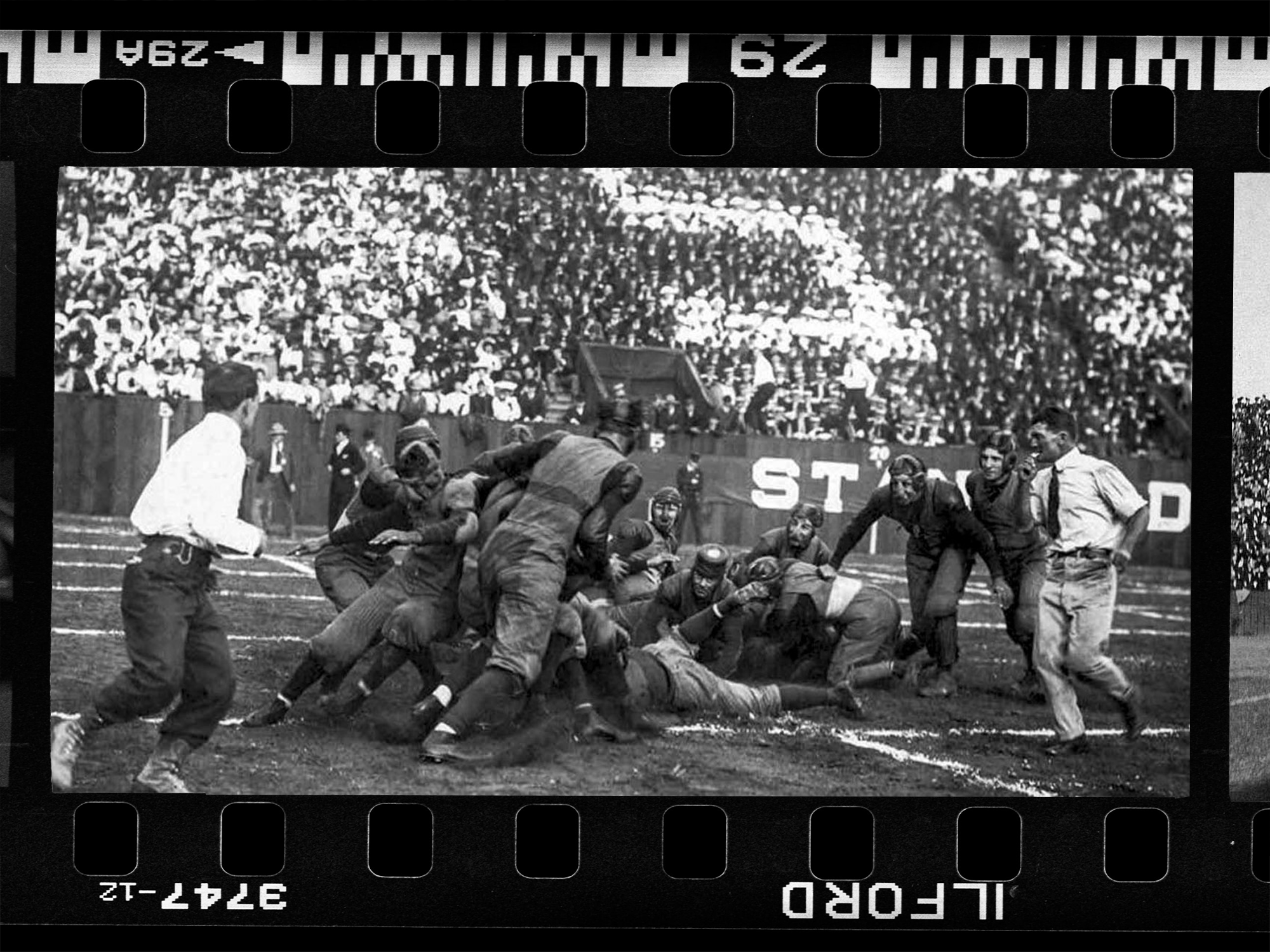If you were wondering how many yards Dick Norman ’59 threw for in his record-setting Big Game, you’ve come to the right place.
The Stanford University Archives house two different documentaries about the Stanford-Cal “Big Game,” both from the 1990s. “Great Moments from the Big Game” (1991) is an hour-long feature hosted by late MLB sportscaster Bob Murphy, and “The Big Game: A Century of Tradition” (1997) is a 30-minute made-for-TV special commemorating the 100th iteration of the event, which took place the same year.
Put bluntly, these films are not engaging works of cinema. But when the subject at hand is the same sporting event that has occurred 100 times, the objective of the documentary probably shouldn’t be intrigue or interest. Instead, these films offer a genuinely reliable record of this singular game of football.
The answer is 401 yards, by the way. Norman and the laundry list of Stanford and Berkeley players across 100 years of play constitute the majority of “Century of Tradition.” While some die-hard alumni and football nuts may find this a useful repository for sponging up information, I found it tedious. I can imagine falling asleep quickly after tuning in aimlessly on a lazy Sunday afternoon.
Otherwise-mundane factoids immediately stand out against the monotony of these stat lines. Did you know that Herbert Hoover, class of 1895, was the manager of the Stanford football team for the first Big Game? Or that by 1997, both schools had produced exactly 55 All-American Team players, respectively? Or even that Big Game was a rugby match for nine years because football was deemed too violent? As a casual football fan, I found these tidbits of trivia to elicit a reaction of momentary curiosity, but nothing more.
The real pleasure I derived from my viewing experience was actually in the films’ progression through time. Whether intentional or not, these films show the evolutions of football and of both the schools in a truly effective way. To see the uniforms change from barely-a-helmet to modern gear is quite striking; to see that the uniforms of the marching bands haven’t changed in at least 50 years is quite funny.
The sheer quantity and quality of footage is also remarkable, even if not surprising (given Leland Stanford’s role in the invention of film). I constantly found myself in awe of how early certain aspects of sports broadcasting were developed: field-side video before 1920, “high-definition” slow-motion by the 1940s and on-screen stats displays by the 1970s.
This strangely historiographical experience extends to the films’ production: music for “Century of Tradition” was recorded by LSJUMB and the Cal Band, as well as Fleet Street, the Mendicants and the University of California Men’s Octet. It’s difficult to describe the realization that these experiences are as familiar to us as they were to students multiple generations ago.
If you’re deciding on which to watch first, I would say that “Great Moments” seems to use its footage better than “Century of Tradition.” Murphy is shown while he narrates the former, while Terry McGovern just talks over old photographs. Similarly, “Great Moments” engages strongly with its talking heads, while “Century of Tradition” fields basically a single quote from each source.
Regardless, these fantastically free resources are a wonderful glimpse into the past for anyone looking to brush up on the minutiae of Big Game history. Though if you have anything more important to do, I might suggest you save them for a later-date trip down memory lane.
Editor’s Note: This article is a review and includes subjective thoughts, opinions and critiques.
